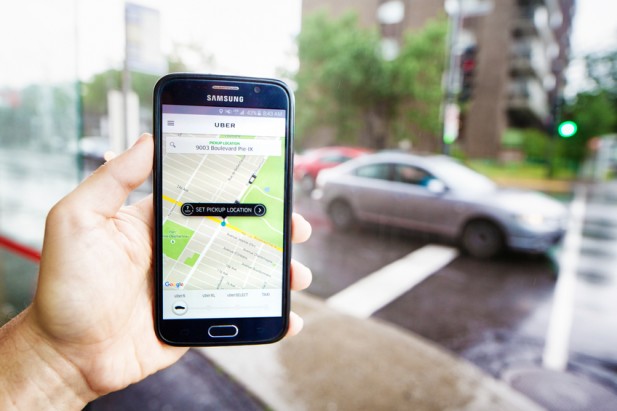The Potential for an Uber Big Nightmare

In 2009, two Californians developed an app that allows users to submit a trip request through their smartphone. With one tap a nice looking mid-size or full-size 4 door vehicle will pick the app user up and deliver him or her to their chosen destination in a cashless transaction. The app user can see how others who have travelled in his or her vehicle rank their driver. The driver can also see how other drivers who have picked him or her up have ranked the app user.
Having travelled in an Uber vehicle I confess that it is a much more enjoyable experience than using a taxi cab. My driver arrived on time in a vehicle that exceeded my expectations. I arrived at my destination on time without feeling as if I had travelled some circuitous route. I paid for my ride without the awkwardness of having to pull out my wallet or ask for change after leaving a tip. I never once thought about all that could have gone wrong until I heard the plight of Tawfiqul Alam.
Mr. Alam was an Uber driver who had the misfortune of being in an accident in the vehicle he used to transport his Uber passengers. When Mr. Alam reported his damages to his insurer he was refused coverage because he had not reported using his car as a commercial vehicle. Mr. Alam’s insurer based their refusal on a standard policy term that disentitles any person to coverage if they use their personal vehicle as a taxicab, bus, sightseeing conveyance, or to any person carrying a paying customer or on their way to pick up a paying customer.
Uber does not require its drivers to carry a commercial insurance policy. It instead claims to maintain a “contingent” $5 million policy that will respond to claims made by passengers, pedestrians and other drivers. This contingent policy makes no mention of coverage for Uber drivers like Mr. Alam. Uber’s policy in the United States, where the company was founded, is that this contingent policy will cover drivers during a trip requested by an Uber user. Uber expects that the drivers’ personal insurance will fill any gap that its policy leaves open.
Uber’s policy leaves its Ontario based drivers, like Mr. Alam, exposed. An Ontario based Uber driver operating with only the minimum Uber requirement of personal insurance risks having his or her policy declared void for a material misrepresentation. Personal insurance is not meant to be used for commercial purposes.
Uber riders are also vulnerable. Uber is not regulated in the same manner as the taxicabs we are more traditionally used to calling. Any licensed and personally insured driver over 21 years of age can apply to be an Uber driver. Uber claims to perform background checks but it has been found to use drivers with criminal pasts. Uber tells drivers that they may use vehicles up to 15 years old as long as they appear to be in excellent condition but there is no maintenance regime in place to verify the vehicle is safe. The Uber vehicle may look nicer than the traditional taxi cab but there is no guarantee that the driver or vehicle is safe to transport you or your loved ones to your chosen destination.
For these reasons, I am less likely to use the Uber app than I was before. If I were to use Uber again I would make sure I ask if a commercial insurance policy is covering the vehicle that I am about to climb into. I will not use the Uber app again unless I know that the driver’s insurance policy will cover my damages in the event of an accident.
[editor’s note: A new Toronto bylaw was put into place on July 15th, but Uber is not yet legally required to adhere to these new insurance restrictions. Click here to learn more.]
